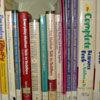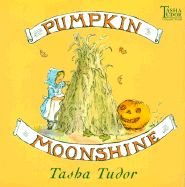 A few days ago, The New York Times ran another story about big-time changes in book publishing, called “Bargain Hunting for Books, and Feeling Sheepish About It.” Its author, David Streitfeld, says that both publishers and bookstores – and among the bookstores, both independents and chains – are not doing well in the current shriveled-up economy:
A few days ago, The New York Times ran another story about big-time changes in book publishing, called “Bargain Hunting for Books, and Feeling Sheepish About It.” Its author, David Streitfeld, says that both publishers and bookstores – and among the bookstores, both independents and chains – are not doing well in the current shriveled-up economy:
Publishers have been cutting back and laying off. Houghton Mifflin Harcourt announced that it wouldn’t be acquiring any new manuscripts, a move akin to a butcher shop proclaiming it had stopped ordering fresh meat.
Bookstores, both new and secondhand, are faltering as well. Olsson’s, the leading independent chain in Washington, went bankrupt and shut down in September. Robin’s, which says it is the oldest bookstore in Philadelphia, will close next month. The once-mighty Borders chain is on the rocks. Powell’s, the huge store in Portland, Ore., said sales were so weak it was encouraging its staff to take unpaid sabbaticals.
Is this only a blip in bad economic times, or is it the beginning of the end for books as we’ve known them in the past? Streitfeld says that the economy has little to do with it; it’s the fault of all of us Internet-savvy buyers, who hunt for the best book deals online from places like Amazon and skip local bookstores. Then we resell the books or give them away as gifts when we’re through with them, further cutting into book sales. I’m not so sure this is the primary reason for the apparent “end of the paper book.” Many of us readers are simply spending way more time with our electronics.
And of course, people continue getting books, “free,” from libraries. ALA keeps telling people that the number of folks using libraries is higher than ever – although if what I see in the branch of the Austin Public Library where I work, which serves a middle-middle-class clientele is any indication, when you add together the number of DVDs in circulation to the number of books on CD that go through the door every day, they leave the building in about equal numbers compared to books with covers and pages. This goes for both adult and children’s materials. People working in branches that serve lower-income folks have told me that if they weren’t circulating DVDs and CDs, they’d barely circulate anything at all.
What does this mean for the future of books, and the future of libraries? It’s pretty clear that society at large continues spending more time with electronic media, which I guess makes me feel optimistic that the proportion of library budgets going to media – DVDs and books on CD especially – continues to grow.
But I wonder how libraries will deal with the growth of the all-purpose device that is coming to dominate the lives of more of us – the Internet phone. Here’s the Pew Internet and American Life project’s new study, “The Future of the Internet III.” As in its previous versions, the study focuses on several main possibilities as to what the Net will be like in 2020, soliciting votes from Internet experts on whether those possibilities will actually happen.
Here’s the first few lines of one such possibility, “The Evolution of Mobile Internet Communications”:
The mobile phone is the primary connection tool for most people in the world. In 2020, while “one laptop per child” and other initiatives to bring networked digital communications to everyone are successful on many levels, the mobile phone—now with significant computing power—is the primary Internet connection and the only one for a majority of the people across the world, providing information in a portable, well-connected form at a relatively low price.
Seventy-seven percent of the experts interviewed agreed this would probably be reality in 2020, and although I’m far from an expert, I agree, too. We’re much more likely to be reading books from a mobile phone than from specialized e-book-reader devices like the “Readius,” above. If Internet phones become the unquestioned kings of communication in a manner far beyond their role right now (which implies that laptops and other PCs will be well on their way to obsolescence by then), I’m wondering how libraries will deal.
Downloadable movies, audiobooks, and books? Yes, yes, and despite what I said at the beginning, yes. I don’t think books, whether for adults or kids, will die that easily.








